From inside (document excerpt):
Commercial Products Fundamentals of Reel Mowers PART NO. 98008SL, Rev. C This page is intentionally blank. Fundamentals of Reel Mowers Table of Contents 1 Historical Background . 2 Theory of Operation 4 Importance of the Operator . 8 Preventive Maintenance 9 Set-up and Adjustments 11 Sharpening 17 TORO® Service Training 2 Fundamentals of Reel Mowers Historical Background The concept of the reel mower goes back to the 1800’s.
It evolved out of a need for groomed turf areas being maintained on a regular basis. Golf course development during the 1920’s and 30’s brought about design improvements in engines and mower drive systems. These improvements continued, allowing for lighter weight and easier to use equipment. TORO® Service Training Fundamentals of Reel Mowers The development of hydraulics during the 50’s and 60’s improved the reliability, safety, operator comfort and lowered maintenance costs. 3 Although dramatic improvements have been made in reel type mowers, some of the same frustrations that developed working with reel cutting units years ago are still present today. If reel mowers unique characteristics are not understood and responded to, the end result will be a poor quality of cut and expensive down time and repairs. TORO® Service Training 4 Fundamentals of Reel Mowers Theory of Operation There are three main structural members in a reel cutting unit: The REEL consists of varying numbers of helix shaped blades attached to support spiders which are mounted on a rotating shaft. The BEDKNIFE is attached to the bedbar and the assembly is mounted to the main frame in a manner that allows for paralleling and adjustment to the reel. The FRAME supports the rollers, the bedbar assembly and reel with it’s drive mechanism, which can be hydraulic, belt driven or ground driven. A reel mower cuts grass with a scissors-like shearing action as the moving helix shaped blades pass over the stationary bedknife. The cutting action requires that the bedknife and reel blades be sharp, matched, and in close relationship with each other. When properly maintained and operated, reel mowers provide superior quality of cut. It cannot be overstated that reel mowers are precision tools. It is essential that they be adjusted and operated with this in mind. Reel Mower Clip To understand reel cutting theory, you must understand the concept of clip and the shear point. A shear point is any single point of contact made between the reel blade and bedknife. Clip is the forward distance traveled between successive blade contacts at one shear point. TORO® Service Training Fundamentals of Reel Mowers Factors Affecting Clip · The diameter of the reel The number of reel blades The speed of the reel The ground speed. 5 By following the blade path through two “clips ” as the machine moves forward we can illustrate the actual process of cutting grass. The bedknife pushes grass toward the shear point while the reel blade gathers it in front. Each blade path has one-half clip in which to cut all the grass Note that the grass outside of the forward half clip is not easily gathered. The general rule of thumb concerning height of cut vs. clip is that both measurements should be within 20% of each other. The best results will be obtained when height of cut is equal to or close to the clip. Grass extending beyond the forward half clip, yet tall enough to be within the blade path is less likely to be cut. Reel blades may contact the grass in this area several times prior to the actual gathering of the grass. This is the so called “fanning ” process. This process is more a mechanical striking of the grass that it is of the commonly thought effect of a blowing action. TORO® Service Training 6 Fundamentals of Reel Mowers This is an extreme case corrugation. Because of an imbalance between height of cut and clip, the grass is cut with extreme valleys and peaks. NOTE: If you change equipment or height of cut you may notice some corrugation after the first mowing. This will go away after the grass is maintained at the new height of cut over a period of time. The importance of the bedknife front angle is visible from the side view. Note that the proper angle allows the grass behind the bedknife front edge to be more effectively cut. A front view illustrates the angle between the bedknife and the reel blade which is called the helix angle. TORO® Service Training Fundamentals of Reel Mowers 7 Another term known as “the cutting path ” is the result of the helix angle and the forward motion of the cutting unit. The shear point moves down the bedknife as the bedknife moves forward. The grass is physically cut at an angle to the bedknife. Cross section of turf cut at various heights Other factors which affect reel mowing are the grass density and the grass acclimation or grain. Grass tends to thicken at the normal maintained height of cut. The denser the grass, the easier it is for the bedknife and reel to gather it. Grass density and grain can often override other factors we have discussed regarding the cutting action. 1/2 ” 1 ” 1-1/2 ” 2 ” The basic requirements for good performance of reel mowers are: · The cutting edges on the reel blades and bedknife must be straight and sharp. The bedknife must be exactly parallel with the reel. The bedknife should be positioned against the reel with light contact. · · These requirements will be discussed in more detail later. TORO® Service Training 8 Fundamentals of Reel Mowers Importance of the Operator The Operator has a significant influence on the quality of cut that a reel mower can deliver. The large investment in specialized mowing equipment cannot be jeopardized by unqualified operators. Before an operator can be considered qualified to operate a piece of equipment, there should be a significant effort by the supervisor towards their training and familiarization with each piece of equipment. Make sure the operator reads and understands the Operator’s Manual. Have the operator watch the Operator Training Video, then explain any unique methods or procedures used on your grounds. A supervisor should play a key role in establishing the proper attitude and behavior patterns toward operating turf equipment. A supervisor should not create the impression that a few minutes orientation on a piece of equipment will qualify the operator. Operators and service technicians play a significant role in determining quality of cut, down time, and life of mowing equipment. Make a commitment to train and familiarize staff with each product. Remember, that each type of mowing equipment will have specific operating characteristics, and noise qualities. Operators should become familiar with the product and listen for any unusual changes. Concerns should be reported to the service technician before significant problems develop. TORO® Service Training Fundamentals of Reel Mowers 9 Preventive Maintenance To get the most out of your equipment investment, it is important to have a good preventive maintenance program. Doing scheduled maintenance and adjustments will prolong the life of your equipment, help prevent expensive downtime, and give the best possible quality of cut and performance. Experience has shown that a high percentage of problems that occur in turf equipment have developed over a period of time and could have been prevented by adjustment, lubrication, or other required maintenance. Follow the maintenance and adjustment recommendations listed in the Operator’s Manual. Some products may also have a Quick Reference maintenance decal on the machine. Recommended maintenance intervals should be considered minimum requirements. If the equipment is operated in particularly harsh conditions, such as very hot weather, during the “grow in ” period after construction, or on topdressed greens, these procedures may have to be performed more often. Use original Toro parts when doing maintenance or repairs. These parts have been tested and designed for this specific, very demanding, application. “Will fit ” parts may look the same and fit, but they can give totally different performance. Don’t take a risk on your important equipment investment by saving a little money now that can cost you expensive repairs or increased maintenance intervals later.


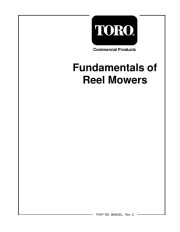 Toro Owners Manual - 1 of 28
Toro Owners Manual - 1 of 28 Toro Owners Manual - 2 of 28
Toro Owners Manual - 2 of 28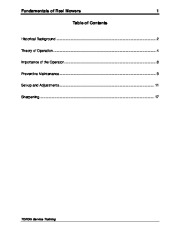 Toro Owners Manual - 3 of 28
Toro Owners Manual - 3 of 28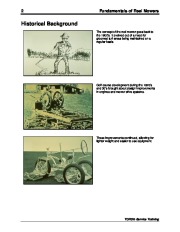 Toro Owners Manual - 4 of 28
Toro Owners Manual - 4 of 28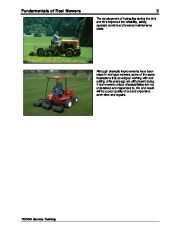 Toro Owners Manual - 5 of 28
Toro Owners Manual - 5 of 28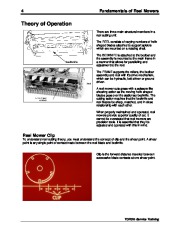 Toro Owners Manual - 6 of 28
Toro Owners Manual - 6 of 28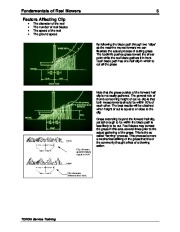 Toro Owners Manual - 7 of 28
Toro Owners Manual - 7 of 28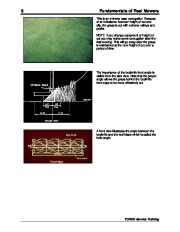 Toro Owners Manual - 8 of 28
Toro Owners Manual - 8 of 28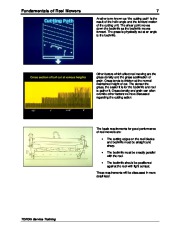 Toro Owners Manual - 9 of 28
Toro Owners Manual - 9 of 28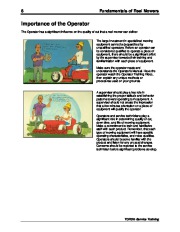 Toro Owners Manual - 10 of 28
Toro Owners Manual - 10 of 28